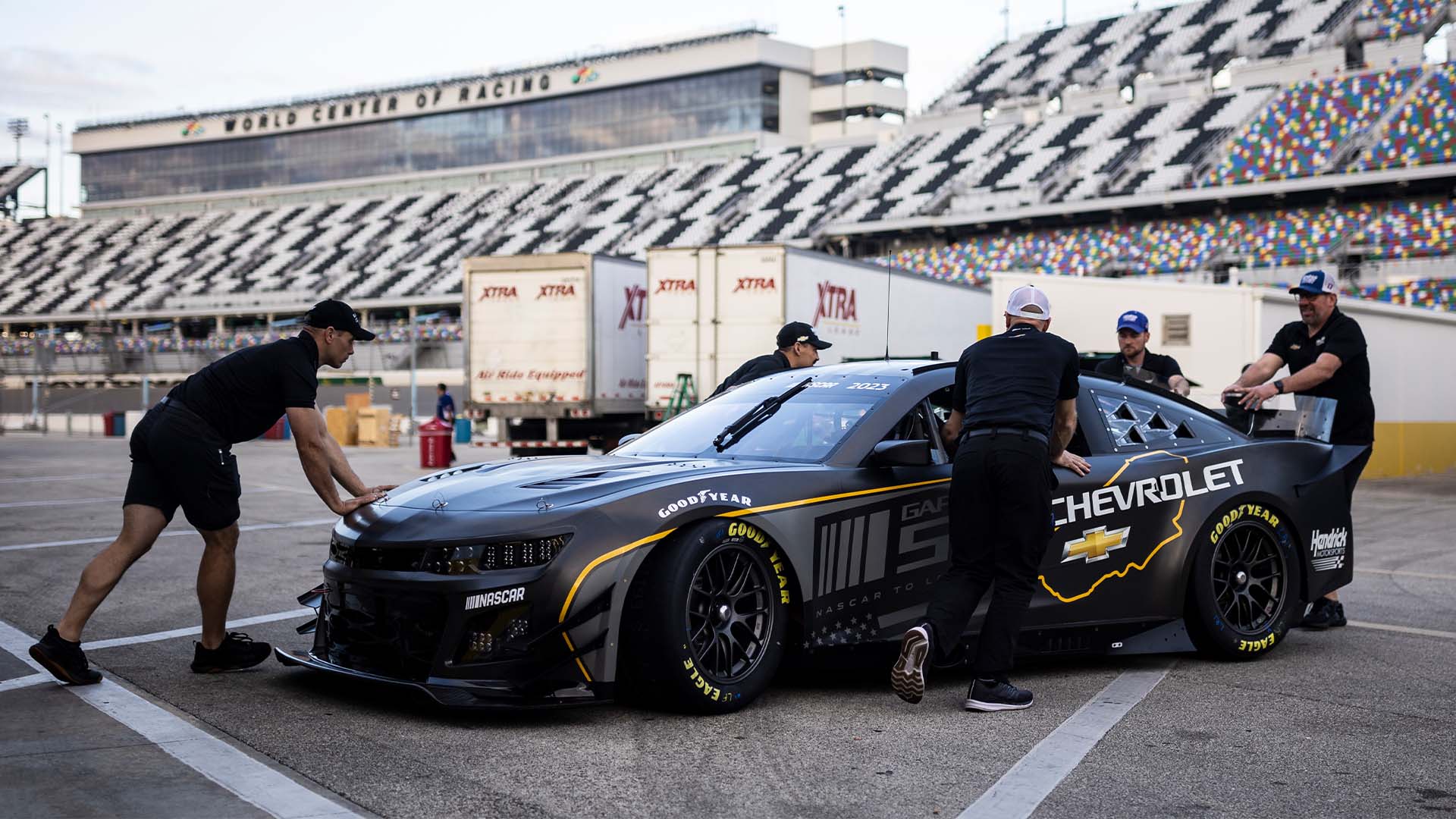

We know by now that the specially prepared NASCAR Chevy Camaro destined for Le Mans is its own monster. It’s based on a NASCAR Next-Gen chassis and sports the same powertrain as the normal Cup car, but little else is exactly identical. All of its dive planes and suspension changes make it quicker around a road course—so much quicker that it’s apparently matching the pace of IMSA’s fastest GTD race cars around Daytona.
This feat was mentioned in a NASCAR.com blog and highlighted on Twitter by IMSA mechanic and occasional contributor at The Drive, Bozi Tatarevic. If the stock car is indeed swift enough to compete with GTD’s top runners, that would put its unofficial Daytona lap times somewhere around the 1:46 mark. The quickest GTD lap at last weekend’s Rolex 24 was 1:46.067, laid down by Heart of Racing’s Aston Martin Vantage GT3.
It’s hard to gauge how much quicker the Garage 56 entry is than a normal NASCAR Cup car around Daytona because the latter doesn’t run the road course there. We might gain more insight later in the year when the Le Mans car practices at the same road courses where Cup cars do race, like Sonoma or the Charlotte roval. Either way, you can bet all that aero is making a difference in cornering.
It was announced over the weekend that Jimmie Johnson, Jenson Button, and Mike Rockenfeller will race the Hendrick Motorsport-prepared Camaro at this June’s 24 Hours of Le Mans. The trio was there at the Daytona test, and Button had the following to say after his first stint in the machine:
“For me, I’ve only done 20 laps, so it’s very difficult for me to talk about where the car is. But for me, it’s getting used to the position in the car. Obviously, there is body roll, it feels like it oversteers, but it’s not oversteering; it’s actually just the car itself taking a set. So the car runs like in the Cup Series, it runs very low at the rear, so on the banking, it’s like sitting on the ground. So it’s a lot to learn, but it’s a race car. And I can work with a race car.”
So even though it’s clearly more capable around a road course than the average Cup car, it’s still a Cup car at its core.

Got a tip or question for the author? Contact them directly: caleb@thedrive.com
